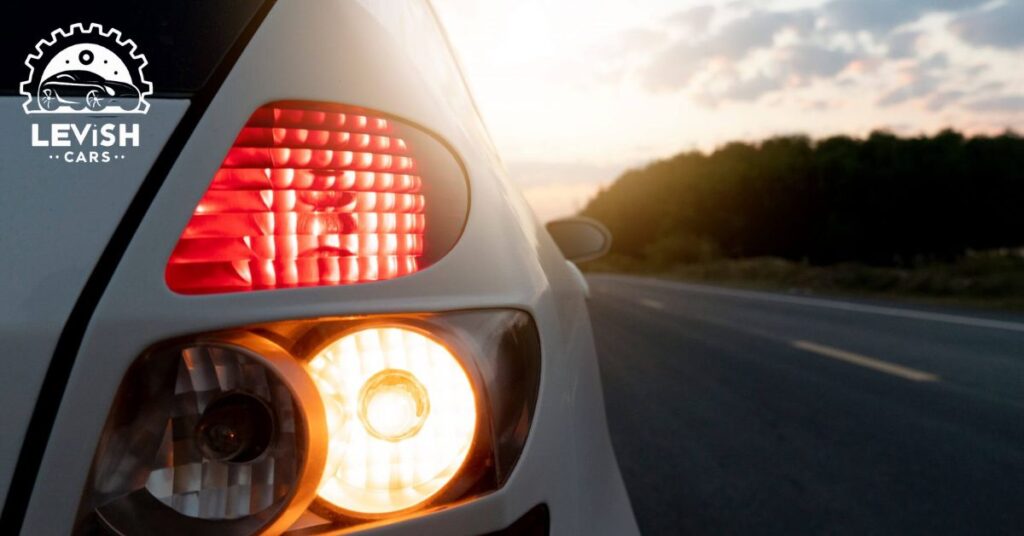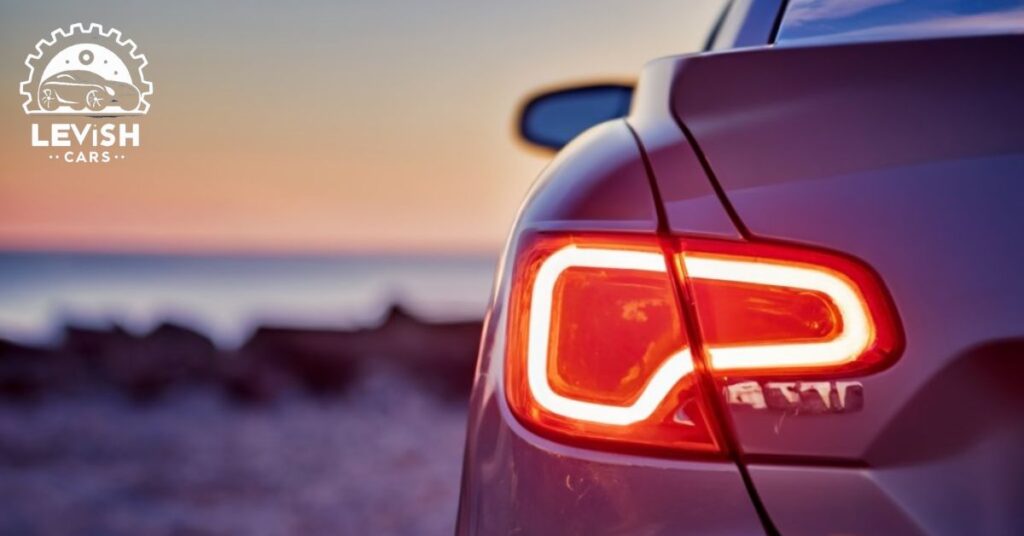A broken or cracked taillight cover can happen to any car and is usually the result of a minor accident or bump. While a broken taillight cover may seem like a small issue, it’s important to get it repaired quickly for safety and to avoid getting a ticket. Replacing a cracked taillight cover is also usually an easy and inexpensive fix.
The cost to replace a taillight cover can range from $100-300 for both the part and labor. The price depends on the make and model of the vehicle, as well as where you get the work done. More affordable options are buying an aftermarket replacement cover and installing it yourself or going to an independent mechanic.
The most expensive route would be taking it to an official dealership. With some basic tools and mechanical aptitude, replacing a taillight cover is a straightforward DIY project. Considering the importance of working taillights for safe driving, fixing a broken one is generally considered a useful investment.
What Does a Tail Light Cover Replacement Include
Replacing a broken tail light cover is a fairly simple repair. It begins with removing the old, cracked tail light cover. This may require removing some screws or clips that are holding the taillight assembly in place. You then remove the damaged cover and install the new replacement cover on the assembly. It is usually a plastic piece that snaps into place where the old one was.
Installing the new tail light cover also involves testing the lights to make sure the wiring and bulbs are still working properly. You want to ensure the brake lights, turn signals, and running lights come on. You may need to replace a bulb if anything is not working. Finally, reinstall the complete taillight assembly back onto the rear of the vehicle.
Secure it properly by replacing any screws or clips. Make certain to test all the lights again before driving to check that the new tail light cover replacement was successful. The whole job usually takes less than an hour.
Average Cost for Tail Light Cover Replacement

The average cost to replace a tail light cover can range quite a bit, but typically falls between $50 to $300for most standard passenger vehicles serviced at an average auto repair shop. The exact price will depend on factors like:
- Vehicle make/model (luxury/specialty vehicles cost more)
- Parts needed (OEM vs aftermarket)
- Labor time and shop rates
- Any additional services (replace in pairs, reseal/paint, etc.)
The complexity of the job and time required play a big role. For high-end or specialty vehicles, expect costs to exceed the $50 to $300 range. But for your average car or truck, this gives a reasonable estimate of what to budget for a basic tail light cover replacement. The shop will ultimately provide an accurate quote based on your specific vehicle.
How Much Does It Cost to Fix a Tail Light
| Task: | Fixing a Tail Light |
| Cost Range: | $50 to $120 |
| Factors Affecting Cost: |
- DIY vs. Professional: DIY repair is cheaper, but professional services may range from $50 to $120 or more.
- Type of Bulb: Standard bulbs are cheaper than LED or specialty bulbs.
- Labor Costs: Professional mechanics may charge hourly rates; DIY only incurs the cost of the bulb.
- Car Model: Luxury or imported cars may have higher repair costs.
Additional Issues: If wiring or other components are damaged, costs can increase.
- | DIY Tips: |
- Buy the Right Bulb: Ensure you purchase the correct replacement bulb for your car model.
- Refer to Manual: Consult your car’s manual for specific instructions.
- Safety First: Disconnect the battery before starting any electrical work.
Simple Tools: Basic tools like screwdrivers may be needed.
- | Professional Service: |
- Auto Repair Shops: Typically charge for parts and labor.
- Dealerships: May be more expensive but provide specialized service.
Online Quotes: Get quotes from various sources for competitive pricing.
- | Average Time: |
- DIY: 15-30 minutes (may vary based on experience).
Professional: 30 minutes to an hour.
- | Common Issues: |
- Burnt Bulb: Most common issue, easily replaceable.
- Wiring Problems: May require professional diagnosis and repair.
Sealed Units: Some modern cars have sealed tail lights, making DIY harder.
- DIY Cost Advantage: DIY can be cost-effective for simple bulb replacement.
- Professional Assurance: Professionals ensure correct installation and may identify other issues.
What Happens If You Don’t Get a Tail Light Plastic Cover Replacement

Driving without properly repairing a damaged tail light plastic cover can lead to some problematic outcomes down the road.
Here are some of the potential consequences:
For one, exposing the inner workings of the tail light assembly to the elements will likely cause further damage over time. Dirt, debris, and moisture can get into the lamp housing and corrode electrical connections. This may eventually lead to total tail light failure, necessitating more expensive repairs.
The cosmetic damage of a broken or missing tail light cover detracts greatly from the appearance of a vehicle. The outer shell of the light serves to streamline and integrate the design lines of modern vehicles. A damaged one stands out in an unsightly way.
There are also road safety concerns. Tail lights play a vital role in communicating braking and turning intentions to other drivers. Compromised visibility due to a damaged cover poses a hazard and risk of an accident. Furthermore, it is illegal to operate a vehicle with non-functioning tail lights in most jurisdictions.
Finally, leaving the problem unresolved may lead to further damage that expands beyond just the tail light area, possibly even compromising the vehicle body structure. Addressing it early limits the scope and cost of repairs down the road.
How Often to Get a Tail Light Plastic Cover Replacement

Tail light plastic covers can become cloudy, cracked, or damaged over time due to exposure to the elements and normal wear and tear. Many experts recommend inspecting tail light covers at least annually and replacing them if any clouding, cracking, or damage is present. Replacing tail light plastic covers annually provides peace of mind that the tail lights will function properly and appear clear.
While an annual tail light plastic cover inspection and replacement may be ideal, it also depends on various factors like driving conditions and mileage. For those who drive primarily in ideal conditions on well-maintained roads, a biannual inspection and replacement may suffice if no clouding or damage is present.
For those driving daily in extreme weather and road conditions, more frequent inspections and earlier replacement may be warranted. Overall, plastic tail light cover inspection and replacement every one to two years helps ensure optimal tail light visibility and safety.
Common Signs You Need to Replace Your Tail Light Cover
Here are some common signs that indicate it’s time to replace your tail light cover:
Cloudiness or fading: Over time, the clear plastic cover can become cloudy, reducing light output. This makes the tail lights harder for other drivers to see.
Cracks or holes: Cracks or holes allow moisture and dirt inside the tail light housing. This can cause electrical issues or allow the tail light to fill with water.
Discoloration: The plastic cover may yellow or take on a foggy white color. This discoloration also reduces visibility of the tail lights.
Condensation or water inside the lens: If you notice condensation, moisture, or water droplets inside the plastic cover, it means water is getting in and needs to be addressed.
Damage from a collision: Even minor rear-end collisions can cause small cracks or damage to the plastic lens, necessitating replacement.
One tail light staying on: If one tail light remains on constantly, the culprit may be a damaged or worn out plastic cover.
Replacing cloudy, cracked, damaged, or discolored tail light covers promptly helps maintain safe visibility and full function of your vehicle’s tail lights. Checking them periodically for any signs of deterioration ensures they can properly illuminate the road behind you.
Frequently Asked Questions
Can you replace just the tail light cover?
Yes, you can replace just the tail light cover, and it is usually a straightforward DIY task.
How much is it to replace the plastic over the tail light?
The cost to replace the plastic over the tail light can range from $20 to $100, depending on the car model and where the replacement part is purchased.
How much does it cost to replace a whole tail light?
The cost to replace a whole tail light, including parts and labor, typically ranges from $50 to $300, but may vary based on the car model and where the repair is done.
Can you drive with a broken tail light cover?
While it’s legal in some places, it’s advisable to replace a broken tail light cover promptly for safety reasons and to avoid potential traffic violations.
Final Thoughts
The cost to replace a tail light cover can vary widely depending on the make and model of the vehicle, as well as where you get the work done. For simple DIY replacements using aftermarket parts, expect costs between $15-50 for just the plastic lens cover. Add another $10-20 for new bulbs or seals. Taking the vehicle to a repair shop generally costs $75 to $180 depending on labor costs. Luxury, antique, or rare vehicles with unique tail light assemblies can cost significantly more for replacement.
In summary, a minor tail light cover replacement is a relatively affordable maintenance item for most vehicle owners, with costs ranging from $25 for DIY jobs up to $300 at professional auto shops. Keeping fresh, crack-free tail light covers improves the aesthetics of your vehicle’s rear while ensuring other drivers can see your signals.
Promptly replacing damaged or cloudy tail light covers as soon as issues arise maintains optimal illumination and safe driving. Considering the importance of properly working tail lights for road safety, the cost is reasonable.

Hey there! I have 5 years of experienced repairing all makes and models. Specializes in engine diagnostics, brake repair, electrical systems, and teaching DIY maintenance tips. Passionate about keeping cars running safely.








